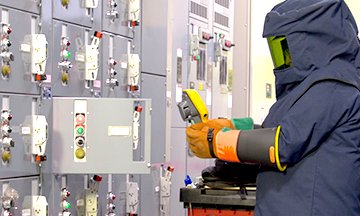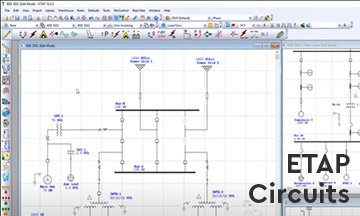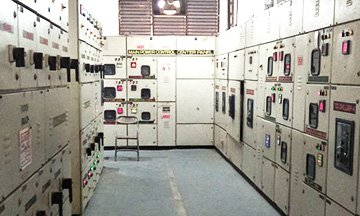ARC Flash Electrical Safety, Protection and Hazard
Course Overview
Arc flashes are known as one of the deadliest electrical hazards because they are sudden, explosive releases of energy that cause many injuries every year. An arc flash may occur when conductive objects are placed near unprotected conductors. Abandoned tools may also trigger sparks that may start arc blasts.
People who are expected to work with or near arc flash hazards must be aware of the risks involved and the things they need to do in order to protect themselves. Arc flash safety measures also refer to the importance of examining old electrical tools with bad parts or worn out wires which can be unsafe because of the extreme degrees of temperature it generates.
When the electrical current leaps, this may also trigger extremely bright flashes of light that can damage exposed eyesight. Each region has its own regulatory body that outlines electrical safety requirements for the overall construction industry and its activities to minimise the risk of electricity-related damages and accidents.
This ARC Flash Electrical Safety, Protection and Hazard training course will highlight the significance of arc flash electrical safety with reference to shock hazards, incident energies, limits of approach, burns, personal protective equipment, and arc flash mitigation strategies.
Companies that employ electrical workers are usually required to conduct an arc flash analysis to evaluate the amount of thermal energy that can be produced within the environment. The results of this analysis will determine the amount of heat-resistant clothing that they should provide their workers.
What topics will this “ARC Flash Electrical Safety, Protection and Hazard” discuss? Overall, this training program will take a look at the causes of arc flash and its probable effects, arc flash protection boundary, incident energy calculations, the importance of warning labels, the use of PPE, and other safety requirements.
This Zoe training course will empower you with a deep understanding of the causes of arc flash incidents and calculation of incident energies, along with the various techniques to ensure arc fault safety.
Course Objectives
Upon completing this ARC Flash Electrical Safety, Protection and Hazard course successfully, participants will be able to:
- Understand the concept of incident energy
- Identify the various causes of arc flash
- Describe the arc flash protection boundary
- Learn the dangers and hazards of high voltage electrical faults
- Determine how to avoid accidents at your workplace
- Analyse the common techniques of arc flash protection
- Explain manual calculation of incident energy and types of personal protective equipment (PPE)
Training Methodology
This collaborative ARC Flash Electrical Safety, Protection and Hazard training program will comprise the following training methods:
- Lectures
- Seminars & Presentations
- Group Discussions
- Assignments
- Case Studies & Functional Exercises
Like all our acclaimed courses, this program also follows the ‘Do-Review-Learn-Apply’ model.
Organisational Benefits
Companies who nominate their employees to participate in this ARC Flash Electrical Safety, Protection and Hazard course can benefit in the following ways:
- Obtain professional training to realise the full potential of a competent workforce
- Gain exposure to standard international procedures
- Increase productivity through a reduction in time taken for project design and commissioning, with the use of industry standards
- Identify opportunities for improvements with insight into the present state-of-the-art technologies
- Network with technology leaders and other peers with strong field experience
- Attitude change of workforce, as continuous follow up of new technologies and up taking could otherwise create a workforce with high resistance to change due to lack of understanding
Personal Benefits
Individuals who participate in this ARC Flash Electrical Safety, Protection and Hazard course can gain from it in the following ways:
- View the importance of safety in high voltage installations
- Be careful and aware of limits of approach
- Recognise the effort of implementing arc flash hazard reduction devices
- Comprehend the hazards of arc flash accidents
- Appreciate the importance of hazard warning labels
- Identify the dangers and risks of accidents in a high voltage installation
Who Should Attend?
This ARC Flash Electrical Safety, Protection and Hazard course would be suitable for:
- Project Engineers
- Safety Officers
- Electrical Engineers
- Maintenance Technicians
- Management Professionals
Course Outline
MODULE 1: WHAT ARE ARC FLASH HAZARDS?
- Overview and Definition of Arc Flash
- Electric Shock Hazards
- Why Does an Arc Flash Happen?
- Why is Arc Flash Important?
- Burns
- Respiratory System Damage
- Skin Penetration by Flying Debris
- Hearing Damage
- Blast Pressure
MODULE 2: IEC, IEEE 1584 AND NPFA 70E STANDARDS
- Internal Arc Fault and Electrical Safety Hazards
- The Severity of Arc Flashes and Arc Blast
- IEEE and NFPA Reference to Arc Flash Hazards
- IEC Standard Effects of AC Currents on Persons
- Electrically Safe Working Environment and Safety Programmes
- Importance and Implementation of Lock-out Tag-out and Its Significance
MODULE 3: THE IMPACT OF ARC FLASH ACCIDENTS
- Current Limiting Fuses and Fast Acting Circuit Breakers
- Over Current Protective Devices That Reduce Arc Flash Hazards
- Arc Flash Metrics
- Arc Flash Incidents
- Arc Flash Mitigation Methods
- Arc Flash Safety Solutions
- Avoiding Arc Flash Incidents
- Arc Proof and Arc Resistant Switchgears
MODULE 4: UNDERSTANDING LIMITS OF APPROACH BOUNDARIES
- Limits of Approach
- Arc Flash Protection Boundary
- Precautions and Installation of Arc Flash Protection Relays
- Importance of Arc Flash Warning Labels
- Incident Energy
- Hazards Risk Categories
- Hazardous Area Classifications
- Electrical Intrinsic Safety
- Types and Functions of Arc Flash Protection Relay
MODULE 5: ARC FLASH RISK ASSESSMENT AND HAZARD ANALYSIS INFORMATION
- Arcing Flash Safety and Maintenance
- ARMS – Arc Flash Reduction Maintenance System
- Ultra-fast Earthing Switch (UFES)
- Arc Vault Method of Arc Flash Control
- Incident Energy vs. Bolted Faults
- Arc Flash Hazards Analysis and Mitigation
- Arc Flash Hazard Calculations
- Arc Flash Hazard Analysis Software
MODULE 6: MINIMISING ARC FLASH EFFECTS AND PHASES OF ARC FORMATION
- Time Current Selectivity
- Measures to Minimise Arc Flashes
- Consequences of An Internal Arc
- Arc Flash Accidents and Preventions
- Avoiding Arc Flash Blasts
- Remote Racking of Circuit Breakers
- Risk Assessment for Electrical Equipment
MODULE 7: ARC FLASH SAFETY & PPE GUIDELINES
- Safety-Related Work Practices
- Electrical Safety Program
- Shock and Arc Flash Risk Assessment
- PPE Determinations
- Additional PPE Guidelines
- Access Restrictions
- Training
- Training Documentation











